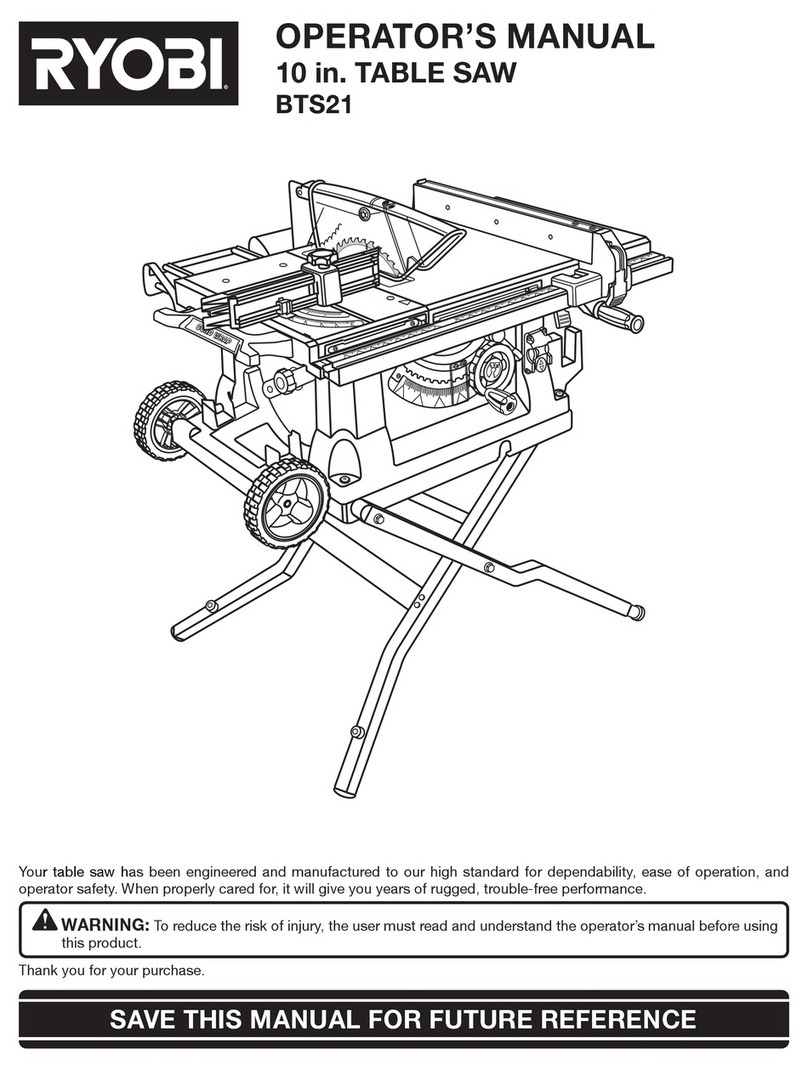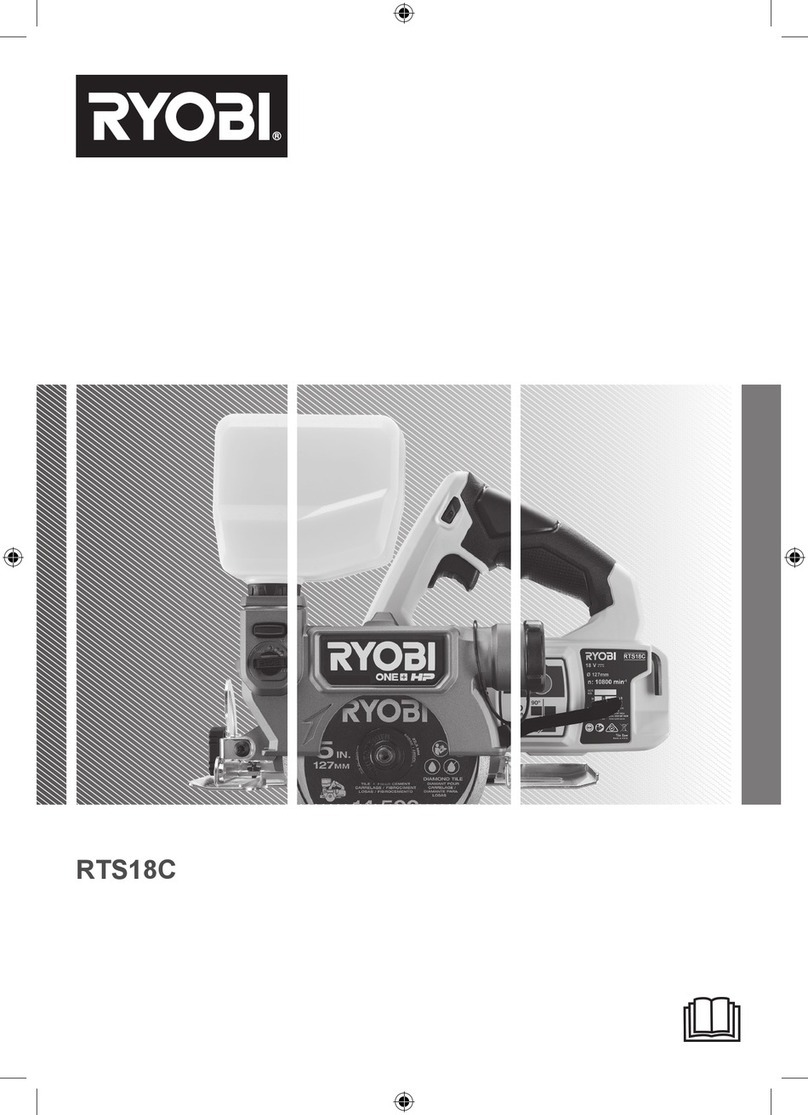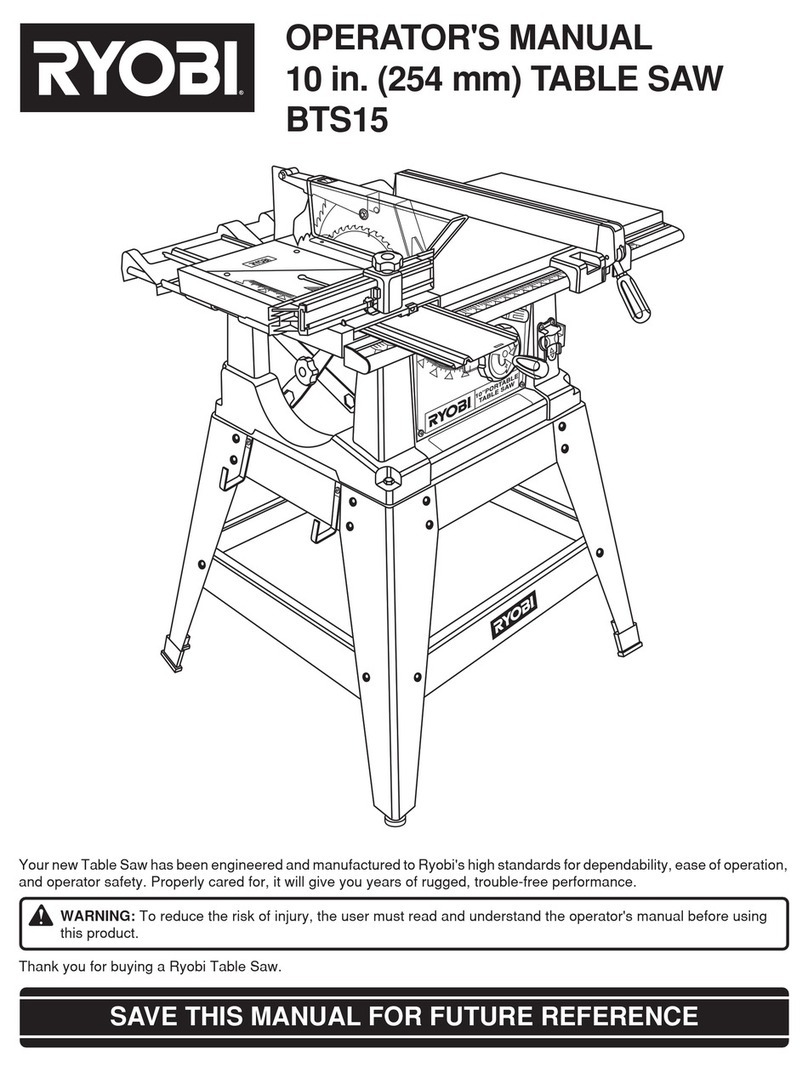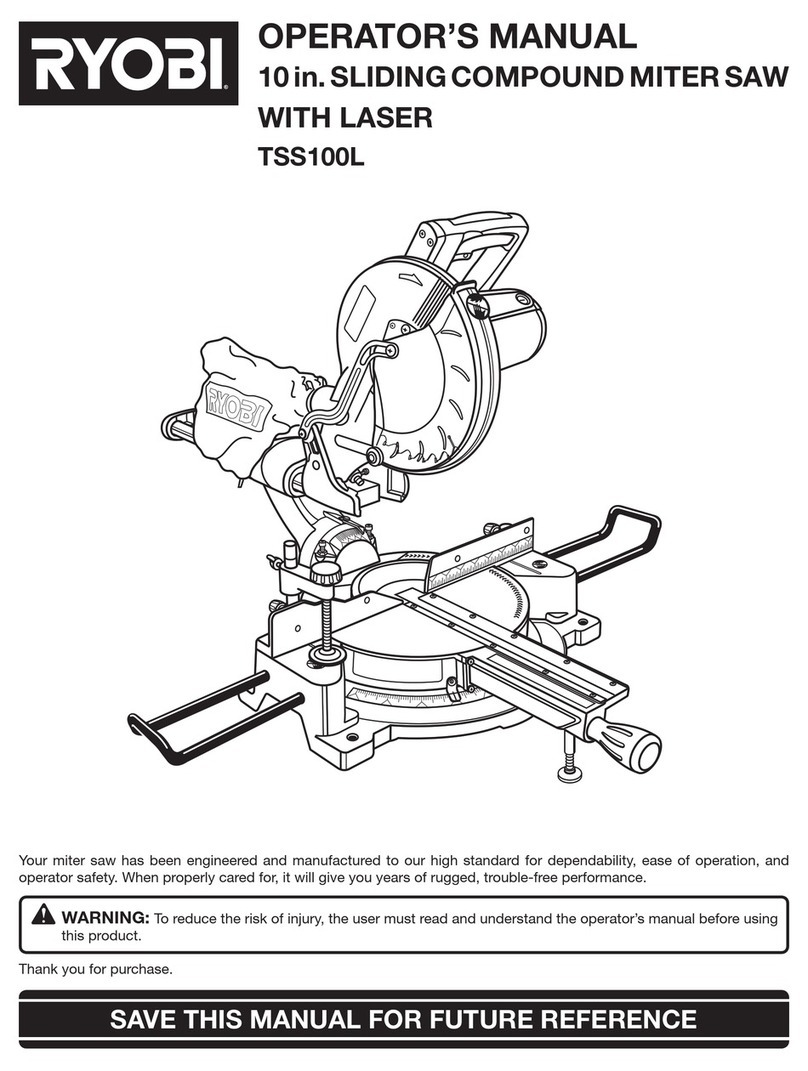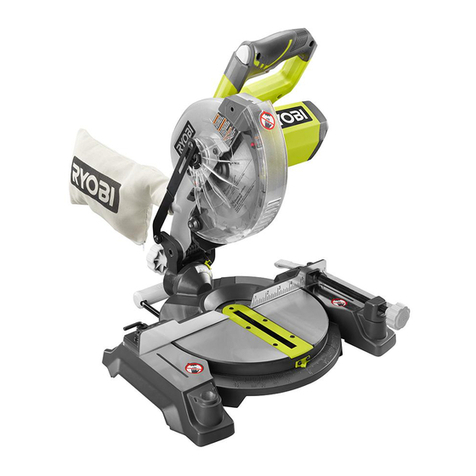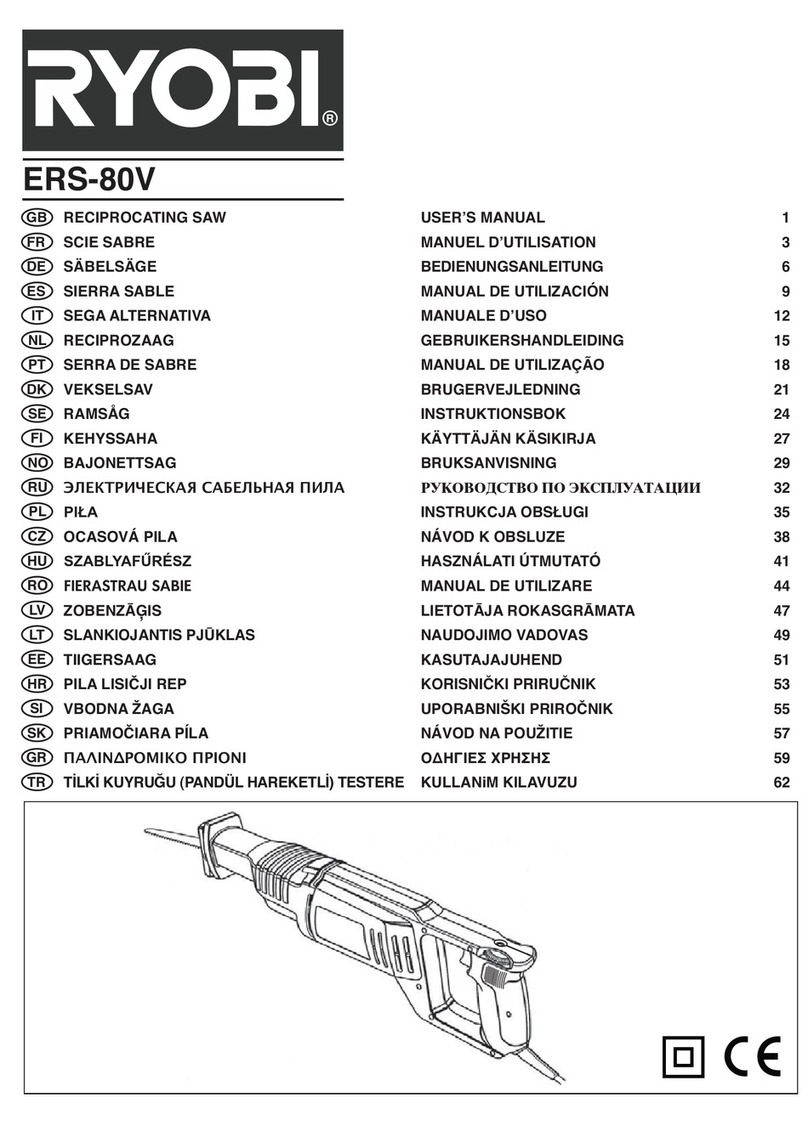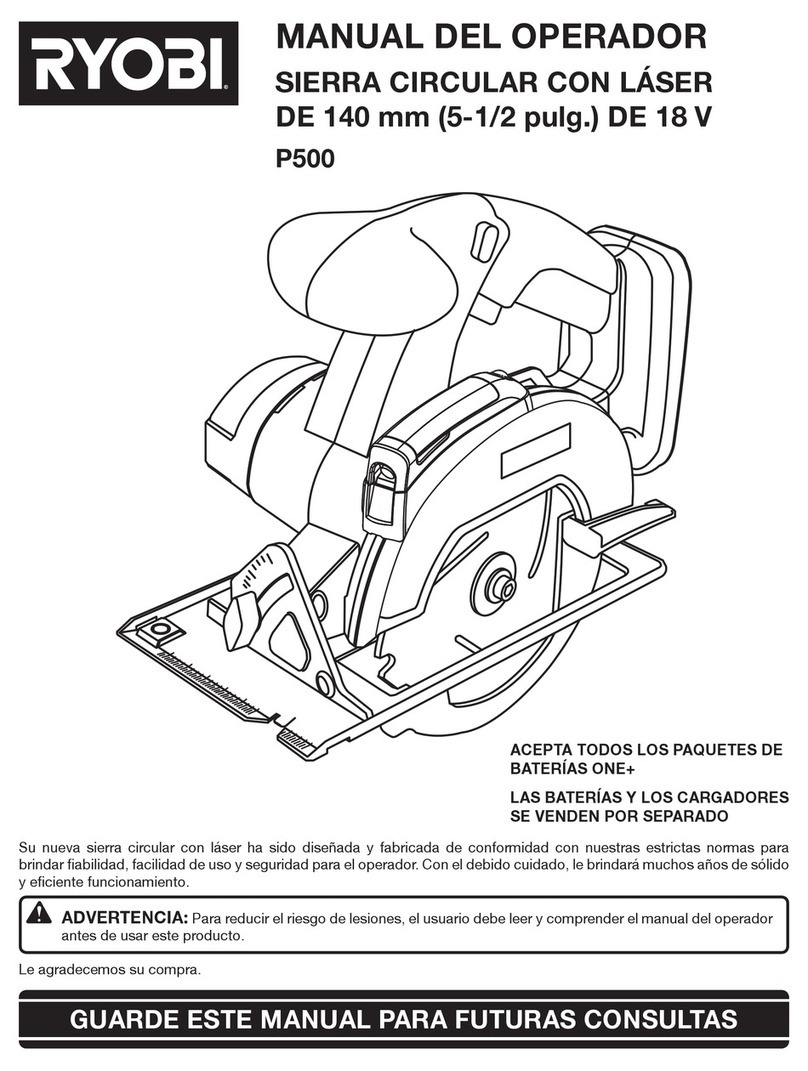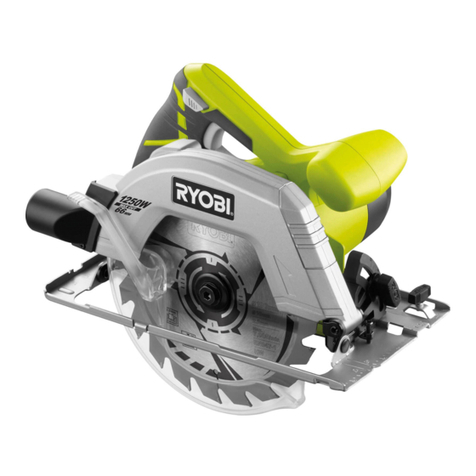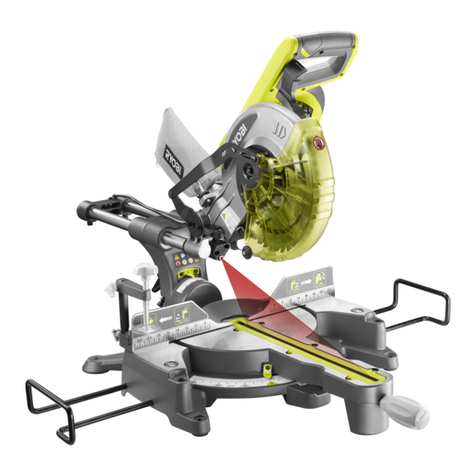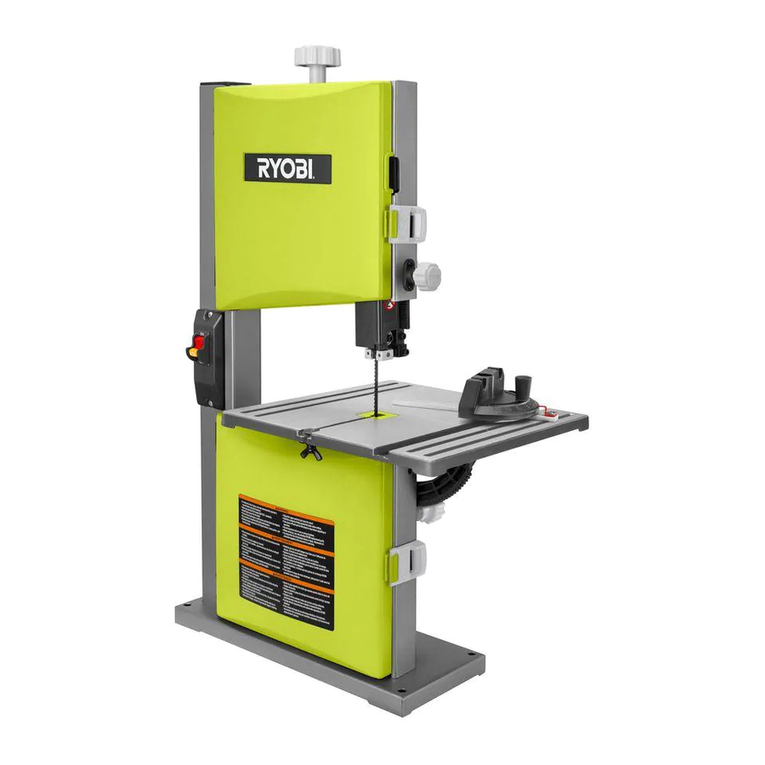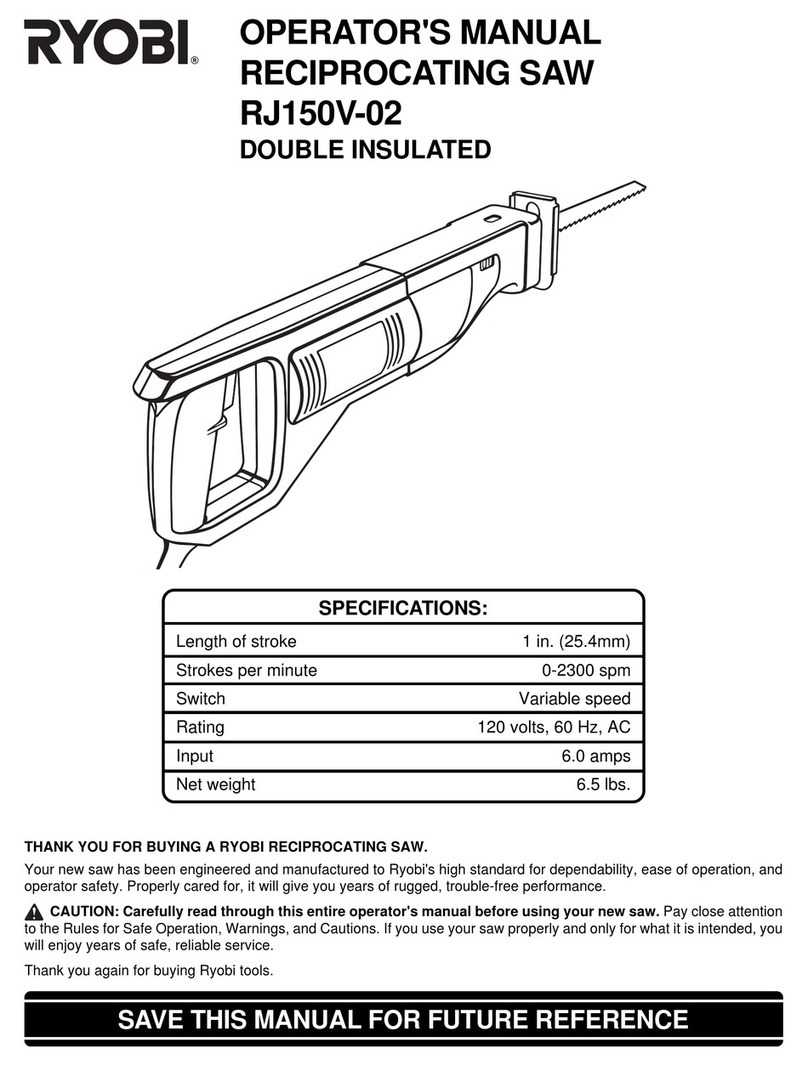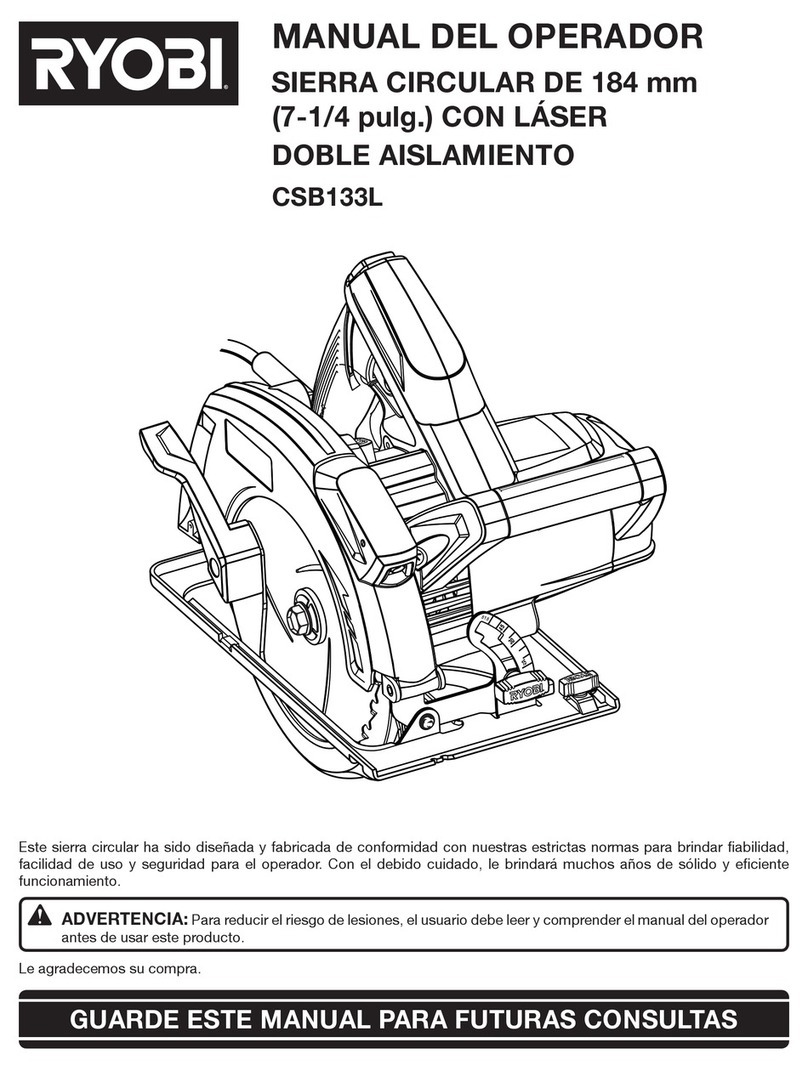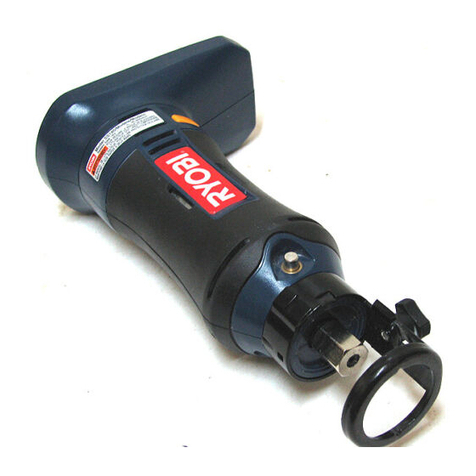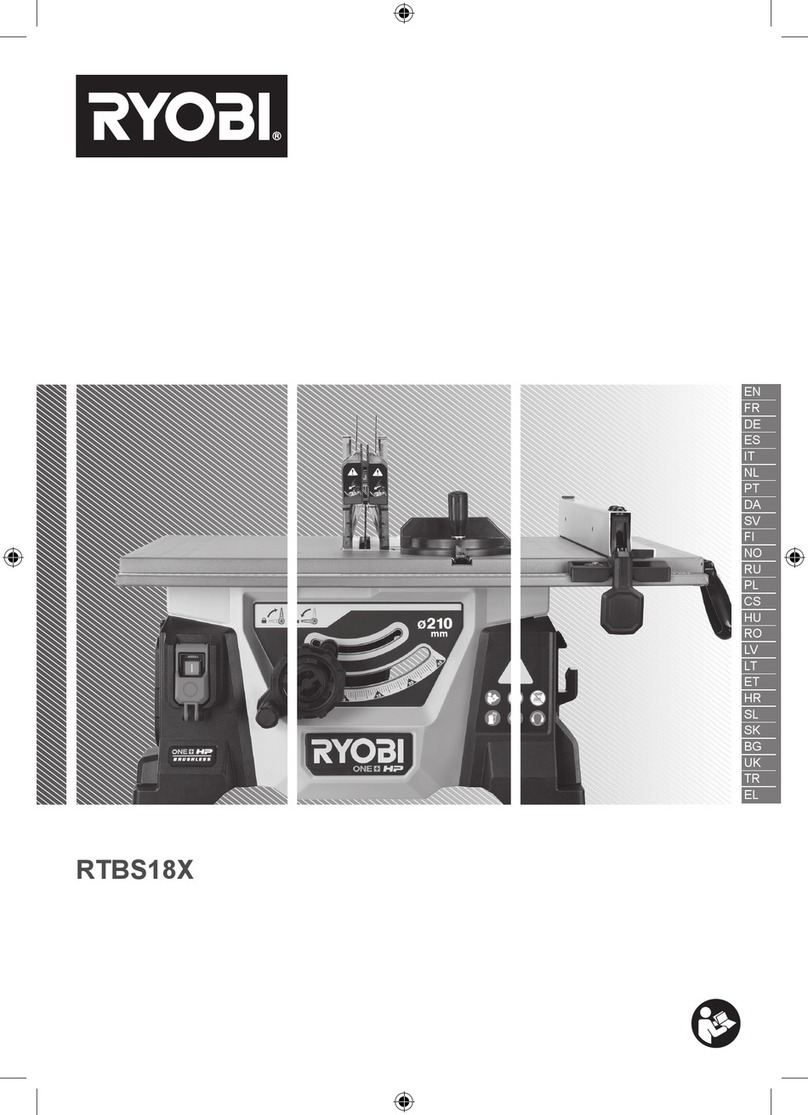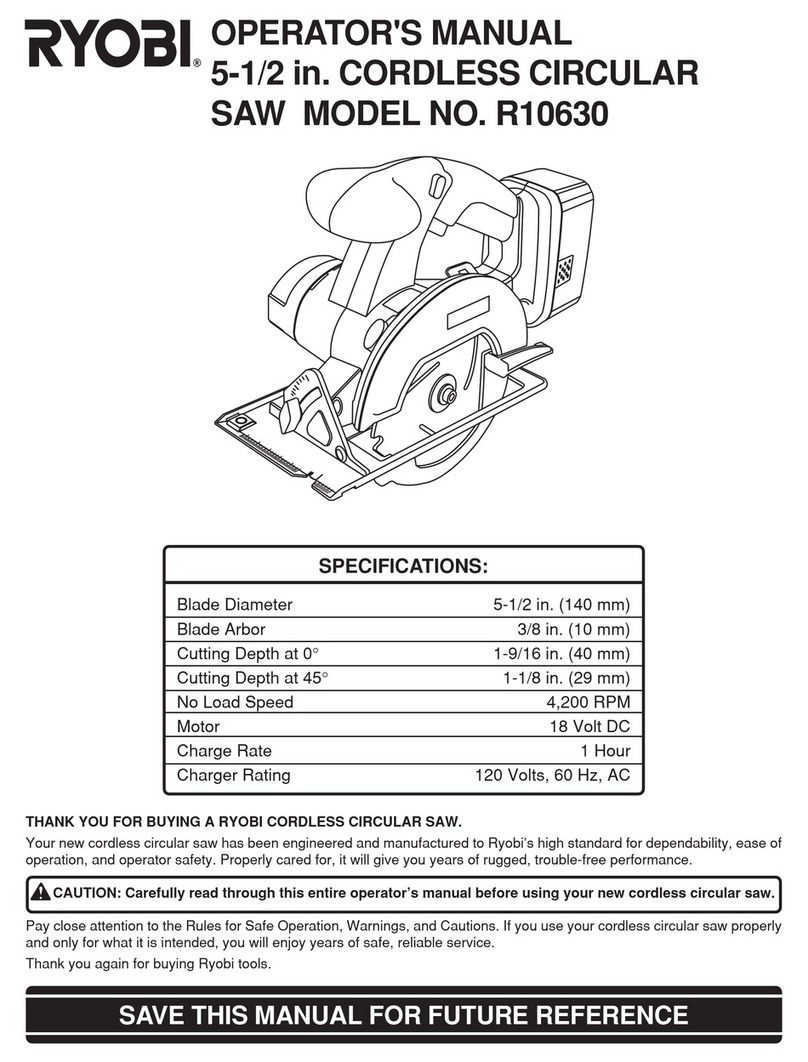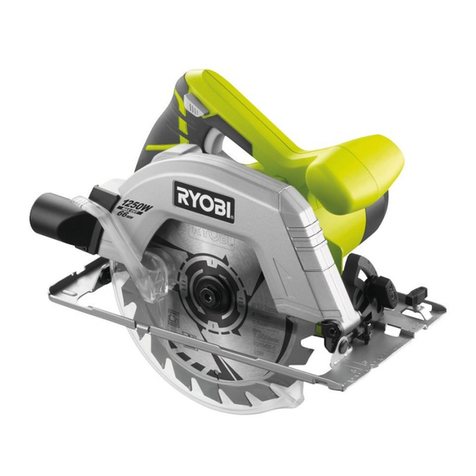
3
■Use the power tool, accessories and tool bits etc.
in accordance with these instructions, taking into
account the working conditions and the work to
be performed. Use of the power tool for operations
different from those intended could result in a hazardous
situation.
■Keep handles and grasping surfaces dry, clean
and free from oil and grease. Slippery handles and
grasping surfaces do not allow for safe handling and
control of the tool in unexpected situations.
SERVICE
■Have your power tool serviced by a qualified repair
person using only identical replacement parts. This
will ensure that the safety of the power tool is maintained.
SCROLL SAW SAFETY WARNINGS
■The product is not intended for use by persons (including
children) with reduced physical, sensory or mental
capabilities, or lack of experience and knowledge,
unless they have been given supervision or instruction
concerning use of the product by a person responsible
for their safety. Children should be supervised to ensure
that they do not play with the product.
■Do not operate the scroll saw until it is completely
assembled and installed according to the instructions.
■The scroll saw must be securely fastened to a
workbench. If there is any tendency for the workbench
to move during operation, workbench must be fastened
to the floor.
■Disconnect the scroll saw from the power source when
installing or replacing the blades.
■Blade teeth should be pointing down.
■Make sure the blade is properly tensioned before
operating the scroll saw, excessive tension may cause
blade breakage.
■Do not cut workpiece that is too small to be safely
supported.
■Always keep hands and fingers away from the blade.
■Always hold the workpiece firmly against the table.
■Do not feed the workpiece too fast while cutting. Only
feed the workpiece fast enough so that the blade will cut.
■Wear ear protectors. Exposure to noise can cause
hearing loss.
■Always wear goggles when using the machine. It is
recommended to wear gloves, sturdy non slipping shoes
and apron.
■Always wear safety goggles or safety glasses with side
shields during power tool operation or when blowing
dust. If operation is dusty, also wear a dust mask.
■Appliances used at many different locations including
open air must be connected via a current surge
preventing switch.
■Always disconnect the plug from the socket before
carrying out any work on the machine.
■Only plug-in when machine is switched off.
■Keep mains lead clear from working range of the
machine. Always lead the cable away behind you.
■Sawdust and splinters must not be removed while the
machine is running.
■Do not attempt to remove cut material when blade is
moving.
■Avoid awkward operations and hand positions where
a sudden slip could cause your hand to move into the
blade.
■Keep hands away from cutting area and the blade.
■Before use, check machine, cable, and plug for any
damages or material fatigue. Repairs should only be
carried out by authorised service agents.
■Do not use dull or damaged blades.
■Use only correct blade.
■Replace the table insert when worn.
■Keep the floor area free of loose material e.g. chips and
cut-offs.
■Ensure that the machine is always stable and secure
(e.g. fixed to a bench).
■Long workpieces must be adequately supported.
■Before using the tool please read the instructions. If
possible have the tool demonstrated.
■The dust produced when using this tool may be harmful
to health. Use a dust absorption system and wear a
suitable dust protection mask. Remove deposited dust
thoroughly, e.g. with a vacuum cleaner.
■Stock having a round or irregular cross section (such as
firewood) must not be cut, as it cannot be securely held
during cutting. When sawing thin stock layered on edge,
a suitable auxiliary fence must be used for firm support.
■It is recommended that the product always be supplied
via a residual current device having a rated residual
current of 30mA or less.
RESIDUAL RISKS
Even when the product is used as prescribed, it is still
impossible to completely eliminate certain residual risk
factors. The following hazards may arise and the operator
should pay special attention to avoid the following:
■kick-back of work pieces or parts of work pieces due to
improper adjustment or handling
■damage to the respiratory system
NOTE: Wear respiratory protection masks containing
filters appropriate to the materials being worked. Ensure
adequate workplace ventilation. Do not eat, drink or
smoke in the work area.
■damage to hearing if effective hearing protection is not
worn.
MAINTENANCE
■Do not modify the product in any way or use accessories
not approved by the manufacturer. Your safety and that
of others may be compromised.
■Do not use the product if any switches, guards or
other functions does not work as intended. Return to
an authorised service centre for professional repair or
adjustment.
■Do not make any adjustments whilst the product is
running.
■Always make sure the power plug has been removed
from the mains power source before making
adjustments, lubricating or when doing any maintenance
on the product.
■Before and after each use, check the product for
damage or broken parts. Keep the product in top
working condition by immediately replacing parts with
spares approved by the manufacturer.
■Clean out accumulated dust using a brush or vacuum
cleaner. Do not use compressed air.
■To assure safety and reliability, all repairs, including
changing brushes, should be performed by an
authorised service centre.
■If the power supply cord is damaged, it must be
replaced only by the manufacturer or by an authorised
